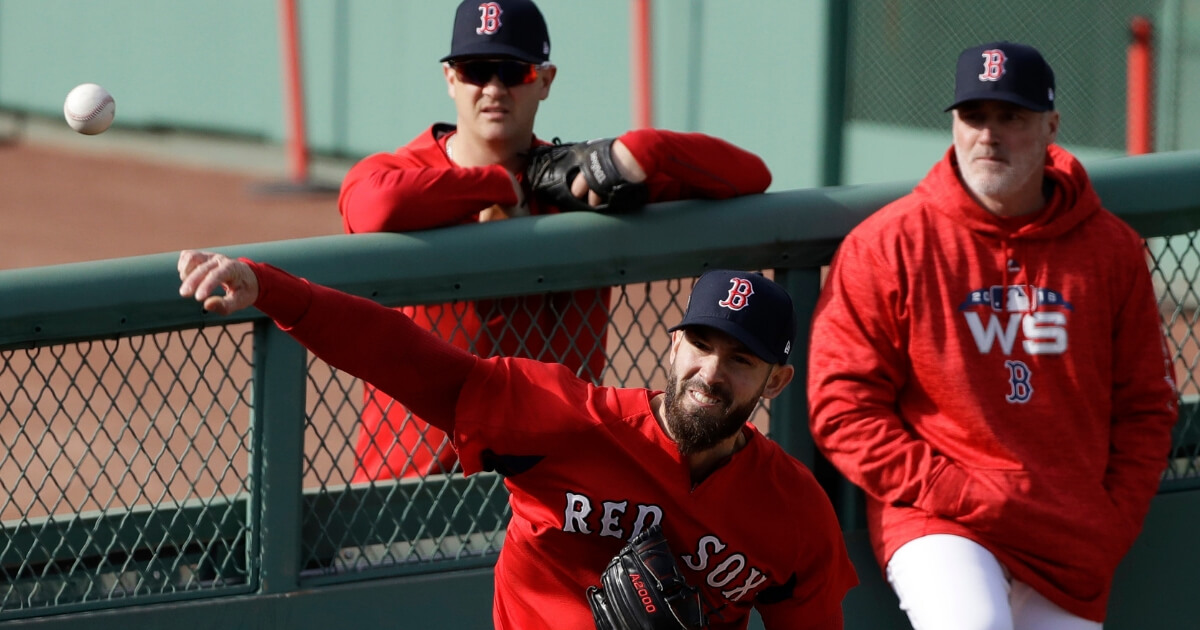
MLB Postseason Has Highlighted Worrisome Trends
This season’s MLB postseason games have averaged 3 hours, 35½ minutes, up six minutes from the 2017 postseason and more than a half-hour over the regular season.
Strikeouts have topped hits in seven of eight postseason matchups. Starting pitchers usually don’t finish the fifth inning and use of relievers is up markedly in an era when “bullpenning” has become a verb.
Have the changes been brought about by analytics made baseball less appealing to casual fans?
“There’s certainly something to be said for that, because ball in play, double plays, defense, that’s always exciting,” Los Angeles Dodgers manager Dave Roberts said ahead of Tuesday night’s World Series opener against Boston. “I know our series (against Milwaukee) there was a lot of strikeouts, but there was the strategy part of it — I think that that’s very exciting for a baseball purist that loves to see what managers think and how you can kind of match up against the opposition.”
Postseason games this year have averaged a record 18.8 strikeouts, according to the Elias Sports Bureau, up from 18.4 last year and 18.0 in 2016. There were 526 whiffs and 416 hits in the first 28 postseason games, including 161 strikeouts and 110 hits in the Dodgers’ win over Milwaukee in the NL Championship Series.
Boston’s Division Series victory over the New York was the only one with more hits (67) than strikeouts (60).
While viewers hope for action, managers and many players are caught up in the tactical chess match between dugouts prepped by front office analytical teams.
“It’s more interesting. It is,” Boston manager Alex Cora said. “There’s so much information now that you can actually exploit weaknesses on the team, not only rely on the starters or your usual setup guy or your closer. Somebody the last few years figured out that there’s a lot of off days in the playoffs, that you can actually use your starters as relievers or you can go with your relievers for multiple innings, and it’s fun. It’s fun as a baseball fan.”
Computer analysis helps teams arrange defensive shifts that take away hits and concludes that starting pitchers’ effectiveness often drops the third time through the batting order. Innovative use of relief pitchers by the Chicago Cubs’ Joe Maddon and Cleveland’s Terry Francona in the 2016 World Series caught the attention of the rest of the industry.
“I don’t think there’s any doubt about it. They started bringing (Aroldis) Chapman and (Andrew) Miller in for two, three innings at time. Now every team that has a dominant reliever or two dominant relievers, their design,” Red Sox pitcher Rick Porcello said. “Find ways to get those guys in the game in the highest-leverage situations, because those are your best arms.”
Starting pitchers averaged 5 1/3 innings and 83 pitches in the 2016 postseason, according to Sports Info Solutions. That dropped to 4.7 innings and 80 pitches last year, and 4.5 innings and 73 pitches this year.
Teams have combined for an average of 8.8 relief pitchers per game this postseason, up from 7.2 last year. The Dodgers’ Clayton Kershaw and Red Sox pitchers Chris Sale, Porcello and Nathan Eovaldi have all made relief appearances between starts.
Could starting pitchers join dinosaurs in extinction?
“You’re still going to need to get innings from your starters,” Dodgers ace Clayton Kershaw said. “Over the course of 162 games you’re going to need guys to pitch six or seven innings.”
Oakland pulled Liam Hendricks after one inning and 25 pitches in the AL wild card game against the Yankees. Wade Miley left after one batter and five pitches in Game 5 of the NLCS against Kershaw and the Dodgers.
Both moves were pre-planned.
Kershaw, who earned $30.4 million this year, wonders whether the lower salaries of relievers have an impact on how rosters are being stocked.
“I think it’s a very cost-effective thing to do, obviously, to bullpen and have a deep bullpen, because starting pitchers are more expensive,” he said. “I think us as an organization, us as a union, will definitely have to take a closer look at that, if that’s the way the game is going. Because I think everybody should be compensated according to what they are worth in the game, so if the bullpen is going to have more value, they’re going to have to pay them more.”
Boston pitcher David Price maintains the need for success prevails over aesthetics.
“If I’m a fan of a team, I want us to have the best chance to win,” he said. “If that means taking the starter out to bring in a reliever for a better matchup, I want our guys to have the best chance to win.”
Cora likes the thrill of inserting starters as relievers. Velocity was up about 2 mph for Porcello and Eovaldi in their bullpen outings, with Eovaldi averaging 101 mph as he got four outs in the pennant clincher against Houston.
“I know I can air it out,” Eovaldi said.
Cora still marveled over Eovaldi’s strikeout of Alex Bregman, who swung under a 101.6 mph pitch.
“That was cool,” he said.
The Western Journal has reviewed this Associated Press story and may have altered it prior to publication to ensure that it meets our editorial standards.
Truth and Accuracy
We are committed to truth and accuracy in all of our journalism. Read our editorial standards.
Advertise with The Western Journal and reach millions of highly engaged readers, while supporting our work. Advertise Today.











